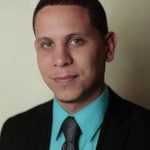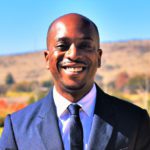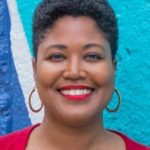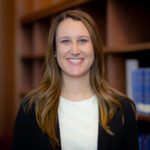Listen to Jessica Nowlan of Young Women’s Freedom Center speak about the importance of investing in systems-impacted youth leadership and building collective power in the abolitionist movement.
Tag Archives: social justice
Movement Partner Spotlight: CURYJ
George Galvis and Xochtil Larios of CURYJ speak about the power of restorative justice, youth leadership and organizing in the abolitionist movement.
Continuing to Diversify our Board Toward Equitable Grantmaking
In 2017, the Andrus Family Fund welcomed our first cohort of community members, ushering in a new era of next-gen philanthropic leadership. We have since elected our first community member, C’Ardiss “CC” Gardner Gleser, to serve as Board Chair — the only Black woman to do so in AFF history. Under her leadership, AFF family and community board members have continued to advance trust-based philanthropic practices, racial equity and social justice grantmaking led by youth impacted by child welfare, youth justice and other harmful systems. Now, we have the opportunity to bring even more wisdom and lived experiences to the table by inviting four new community members, as well as one family member, to our board.
“The fight for racial justice requires all hands on deck, and it is integral that BIPOC, directly impacted, next-generation leaders are in a position to strategically direct the flow of philanthropic resources to communities. I am proud of the Andrus Family Fund’s commitment to sharing power and stepping into more accountability through these newly elected board members. These inspiring leaders embody a deep dedication to youth, transformative change and true power building.”
— Manuela Arciniegas, Director of the Andrus Family Fund
This new chapter at the Andrus Family Fund is a testament of our commitment to lean into more participatory grantmaking in order to shift power to directly-impacted leaders. Our board is a reflection of that commitment. As we continue to evolve as a funder, building a more inclusive board will make us more accountable to the communities we serve.
“One of the most powerful actions a family foundation board can take is to share its power with community members. It allows your foundation to be more responsive to grantee needs and move resources precisely where communities need them. The Andrus Family Fund has reimagined its board in service of its mission. It’s an innovative governance model for family philanthropy that centers racial equity in a concrete and authentic way.”
— Kelly Nowlin, Chair of the Andrus Family Philanthropy Program and Surdna Board Member
We entrusted two consulting firms founded and led by women of color to aid us in our nationwide search for community members: Forward Movement and Movement Talent. We are grateful that they introduced us to our 2021 cohort of social justice leaders.

Jesus Gonzalez
Jesus is a social political analyst, organizing strategist and Puerto Rican activist. He is one of the founding members of Make the Road New York (an AFF grantee partner), where he began as a Youth Organizer and later as its Political Director. Jesus currently serves as the Director of Strategic Initiatives at Center for Popular Democracy (also an AFF grantee partner).
“Youth organizing has consistently been the spark that lights the flame in social justice movements. That fire that’s needed to make the necessary changes for communities of color throughout our country. Andrus is right there beside them, to nurture and support their leadership. I’m honored to join the board and help amplify the fund’s mission.”

Daryl Hannah
Daryl is the Senior Director for Narrative Strategy with the Atlantic Fellows for Racial Equity (AFRE). Prior to joining AFRE, Daryl was a Vice President at BerlinRosen, where he led strategic arts, media and culture campaigns to advance racial equity for non-profits, international foundations and cultural institutions.
“At a time when the dignity and rights of young people of color are under attack, it’s more important than ever to support organizations leading direct service, community organizing, advocacy and other capacity building efforts that connect young people to the positive supports and resources needed for long and successful lives. I’m honored to join the AFF board and to support the Fund’s bold reimagining of philanthropy and social justice.”

Elizabeth Olsson
Elizabeth has over 15 years of experience working with diverse groups of stakeholders to advance education equity and improve outcomes for marginalized children and youth. She recently served as a Senior Program and Policy Specialist for the National Education Association (NEA). Elizabeth earned a Master of Public Administration from New York University and a Master of Teaching from PACE University.
“I’m excited by AFF’s mission to foster just and sustainable change by supporting organizations working to improve outcomes for vulnerable youth. I’m eager to leverage my experience working with directly impacted youth and families to advance systems change to inform and support the Fund’s strategic direction as a community board member.”
 Marcus Pope
Marcus Pope
Marcus is the Vice President of Youthprise in Minnesota, where he oversees grantmaking, development, policy advocacy, communications and special initiatives in service of young people. He currently sits on the board of directors for the Minnesota Council on Foundations and the Mardag Foundation, serves as Trustee for Wallin Education Partners, the Friends of the Saint Paul Public Library, Co-chair of the Saint Paul Promise Neighborhood Community Council, and member of the Dean’s Advisory Council for the U of M College of Education and Human Development (CEHD).
“It’s an honor to serve as a new board member for the Andrus Family Fund. I look forward to helping advance the Fund’s inspiring work that is truly a game changer for promising youth and the organizations that serve them.”
 Zelpha Williams
Zelpha Williams
Zelpha is a family member who participated in the Andrus Family Philanthropy Program, BETs, twice. She is a Johns Hopkins University graduate and taught high school mathematics through Teach for America at City on a Hill Charter School in New Bedford, Massachusetts. Zelpha is currently pursuing a law degree at the Chicago-Kent College of Law.
“When it comes to advancing racial justice, it’s not only about what you fund; it’s also about how you fund and who is at the table. I’m delighted to welcome the Andrus Family Fund’s newest community and family board members. Together they bring the knowledge, community connections and diverse perspectives to make AFF’s grantmaking even more impactful.”
— Don Chen, President of the Surdna Foundation
Manifest with Transgender Law Center
Manifest with FCYO
Manifest with Foster Youth in Action
Dream with Young Women’s Freedom Center
Dream with Common Justice
Dream with S.O.U.L. Sisters Leadership Collective
Dream with Resilient Strategies
A Conviction is Not Justice
Dear Community,
This week we heard a verdict that delivered some justice to George Floyd’s family, to Black, Indigenous, and People of Color communities in the U.S., to Minnesotans of all races and creeds, and Black communities worldwide. Shortly thereafter, we were barely unable to exhale when we heard of the violent taking of the life of 16-year-old Ma’Khia Bryant, who called the police for support only to have her life taken at their hands. I know I speak for the AFF staff in sharing that we, like many of you, are holding complex emotions amidst overwhelming grief…for George, Ma’Khia, Daunte, Adam and for the countless others across generations who we’ve lost to police violence.
I want to lift up George Floyd’s family — nothing can ease your pain. Our deepest condolences and desire for healing and repair. I want to lift up Darnella Frazier, the 17-year-old Black girl who shot the videotape that documented Derek Chauvin’s brutal murder of George Floyd.
I want to lift up the Black Lives Matter movement, countless organizers and allies who took to the streets, and the folks in community who made it their business to demand justice — all with the purpose of honoring George’s memory, deepening their personal commitment to the fight for racial justice and bravely dismantling white supremacy one interaction at a time.
I want to lift up people-power and acknowledge those who saw injustice, and spoke out against it with their bodies, through their organizing, their art-making, their donations, their work at the polls, their prayers, their love and their truth-telling.
I want to lift up the jury — six white and six Black/People of Color — who together were able to ensure that accountability at the hands of our legal system could be realized. It was not that long ago that juries let off George Zimmerman, Daniel Pantaleo (who killed Eric Garner) and countless others (police and civilians) who haven’t been held accountable.
It was painful to explain to my children as we awaited the verdict that just a few short decades ago, unpunished deaths of Black people were social events called lynchings in our country. They were filled with joy and celebration for some white communities and terror and deep pain for Black and Indigenous and People of Color communities. At their young ages, my children were skeptical but more hopeful than I was for justice. To this day, the rage and sorrow I felt 30 years ago for Anthony Baez and Amadou Diallo as a young girl in the South Bronx — the lesson that I lived in a place that allowed unpunished police violence — was imprinted in my being forever. This week’s verdict is held amidst the memories of countless incidents of state-sanctioned violence against BIPOC communities. Grantee partners like Movement for Black Lives, Make the Road NY, Communities United for Police Reform, Live Free Campaign, Young Women’s Freedom Center, among so many others, have the track record to prove that this demand for justice continues to be a long road.
I wish I could feel a sense of gratification about this verdict, but all I feel is deep grief and loss. Our current justice system can’t undo the harm and loss of life. It can’t prevent future harm or police violence. It won’t bring back George, Daunte, Adam, Breonna, Ma’Khia, Anthony or Amadou. Only an altogether different system of community safety and care — the abolition of punitive systems like police and prisons — can deliver justice, safety and a guarantee for a deep regard for human life.
I send you all solace in the grief and strength for our collective fight. I send my deepest sympathy and bittersweet acknowledgement to our Black, Brown and Indigenous family. Our lives have intrinsic value. It is in moments like this when our connection, conviction and organizing — our songs, prayer and ancestral music — come to lift us out of the abyss.
Now is the time for philanthropy to deeply resource BIPOC-led frontline organizations that are advancing abolitionist strategies, healing justice and long term power building for BIPOC communities. It is time to open the floodgates of resources that have historically been locked away and fund well beyond the IRS-required 5 percent. People’s lives are literally on the lines — BIPOC-led organizations need robust resources to turn the tide and powerfully defend communities while building the community-based safety alternatives that render prisons and policing obsolete.
 In closing, I want to direct you to a statement from the Movement for Black Lives, on what true justice for George Floyd looks like and how we can continue to push the movement forward. To support Black-led organizations in Minneapolis and across Minnesota during in this critical moment, consider giving to:
In closing, I want to direct you to a statement from the Movement for Black Lives, on what true justice for George Floyd looks like and how we can continue to push the movement forward. To support Black-led organizations in Minneapolis and across Minnesota during in this critical moment, consider giving to:
- The Daunte Wright Senior Memorial Fund
- 612 M*A*S*H
- Black Table Arts
- Documenting MN
- George Floyd Global Memorial
Be on the lookout for updates to this blog post about action steps philanthropy and communities can take as directed by our movement partners.
In hope and justice,
Manuela Arciniegas, Director




